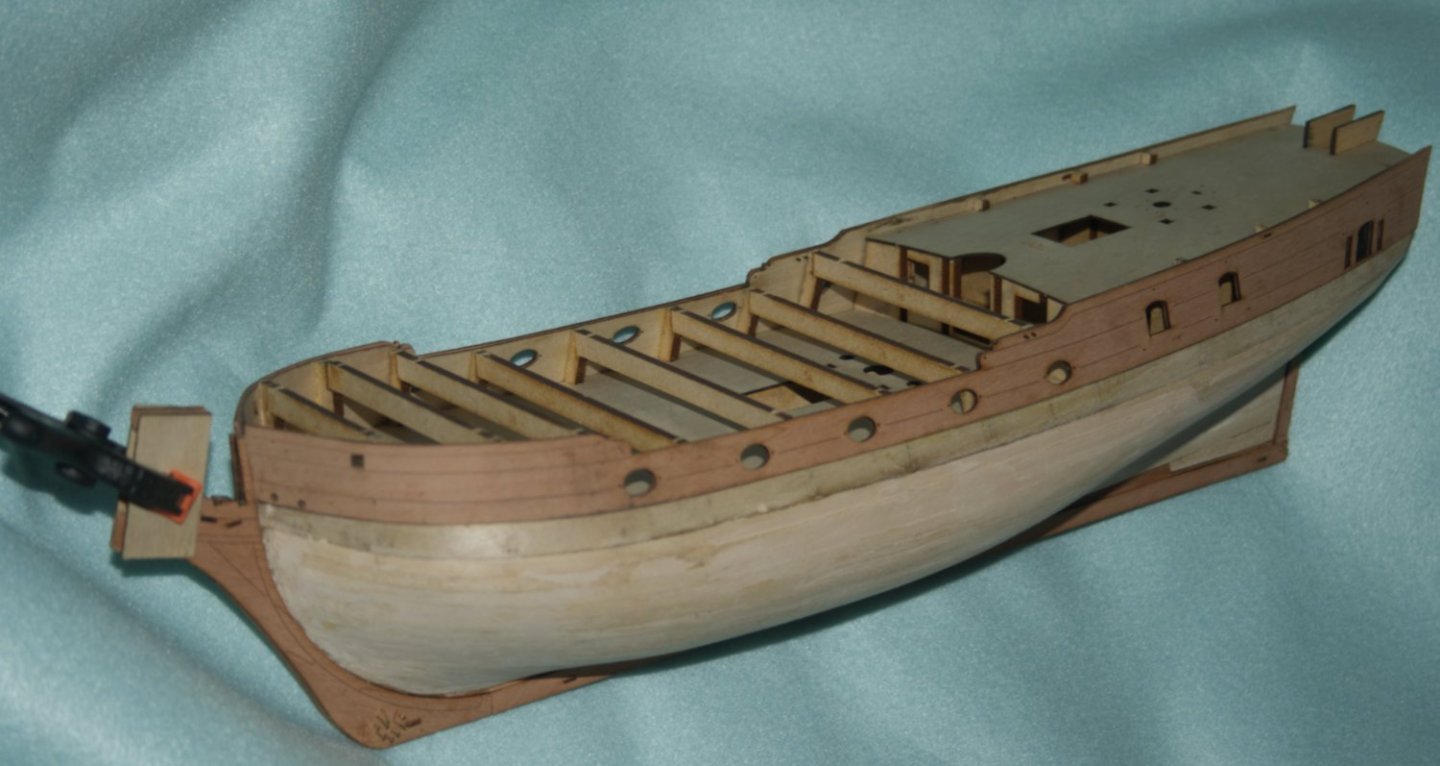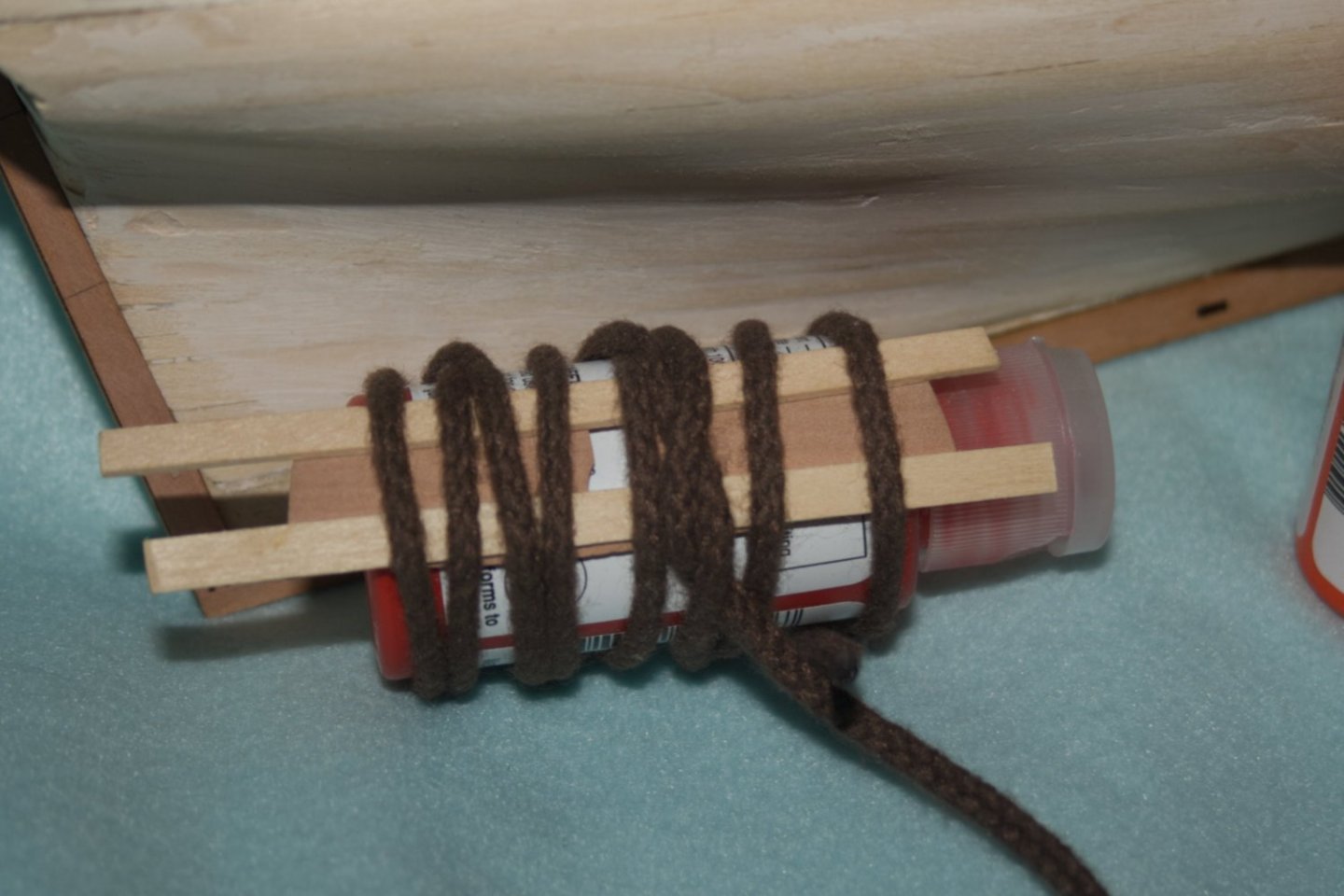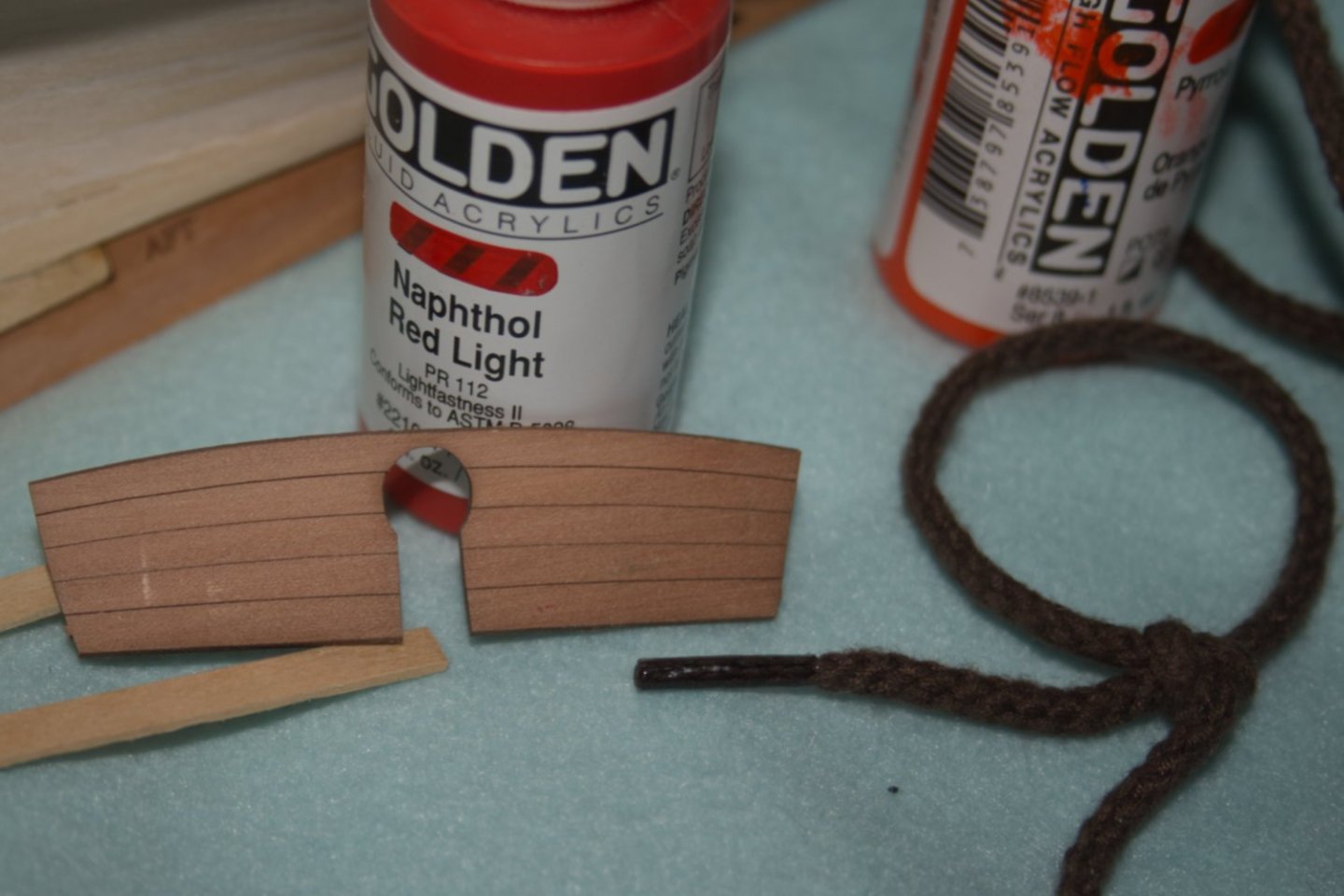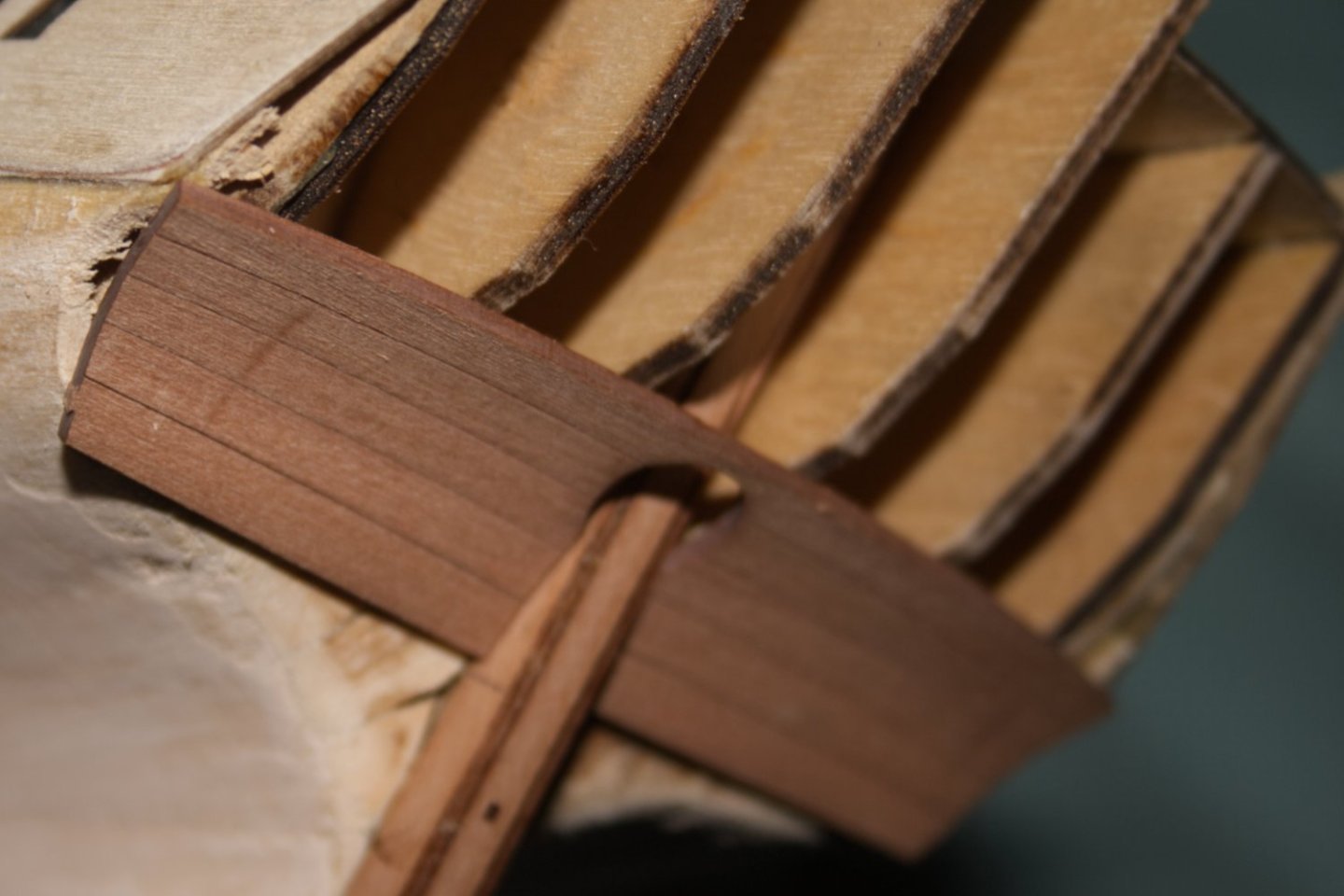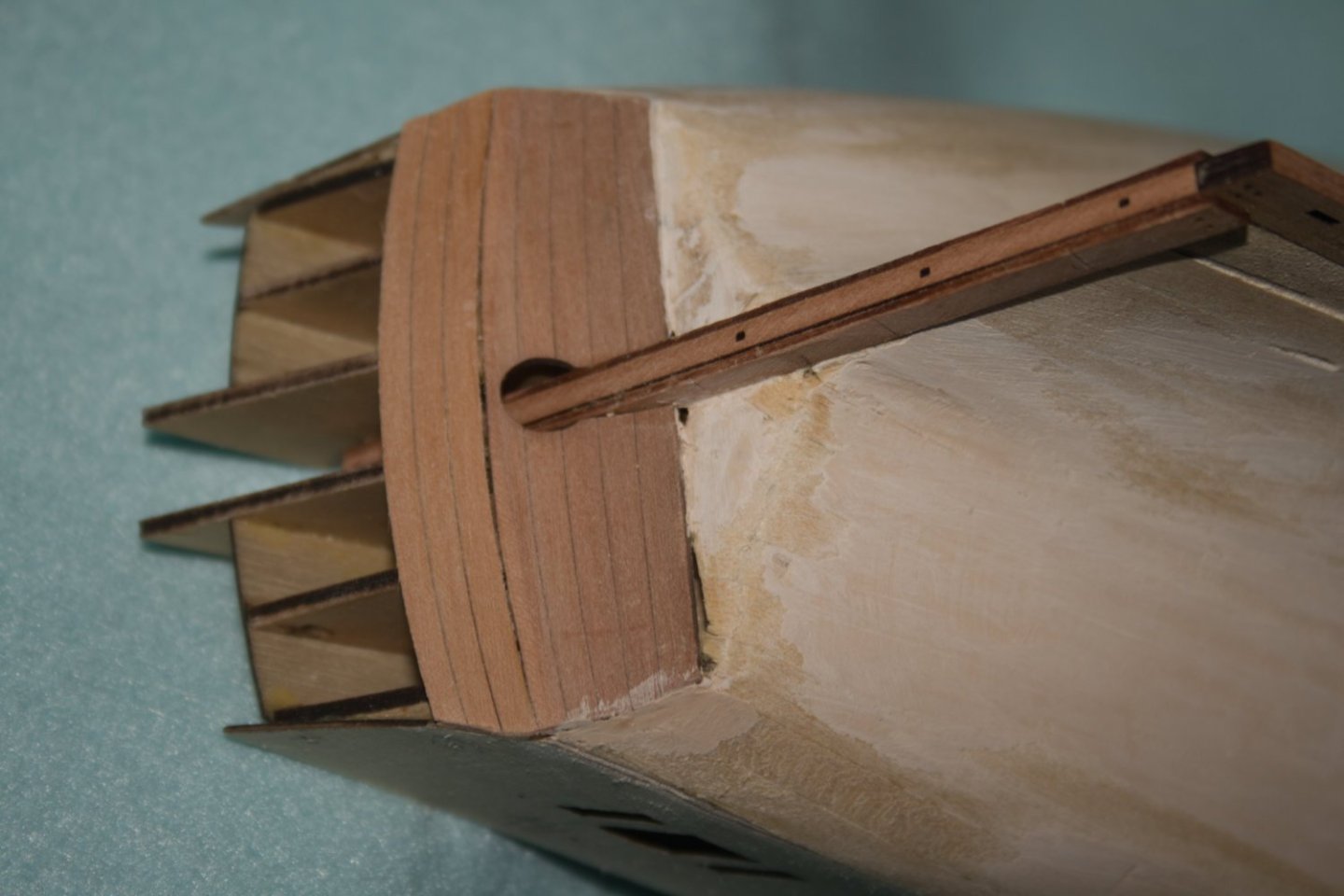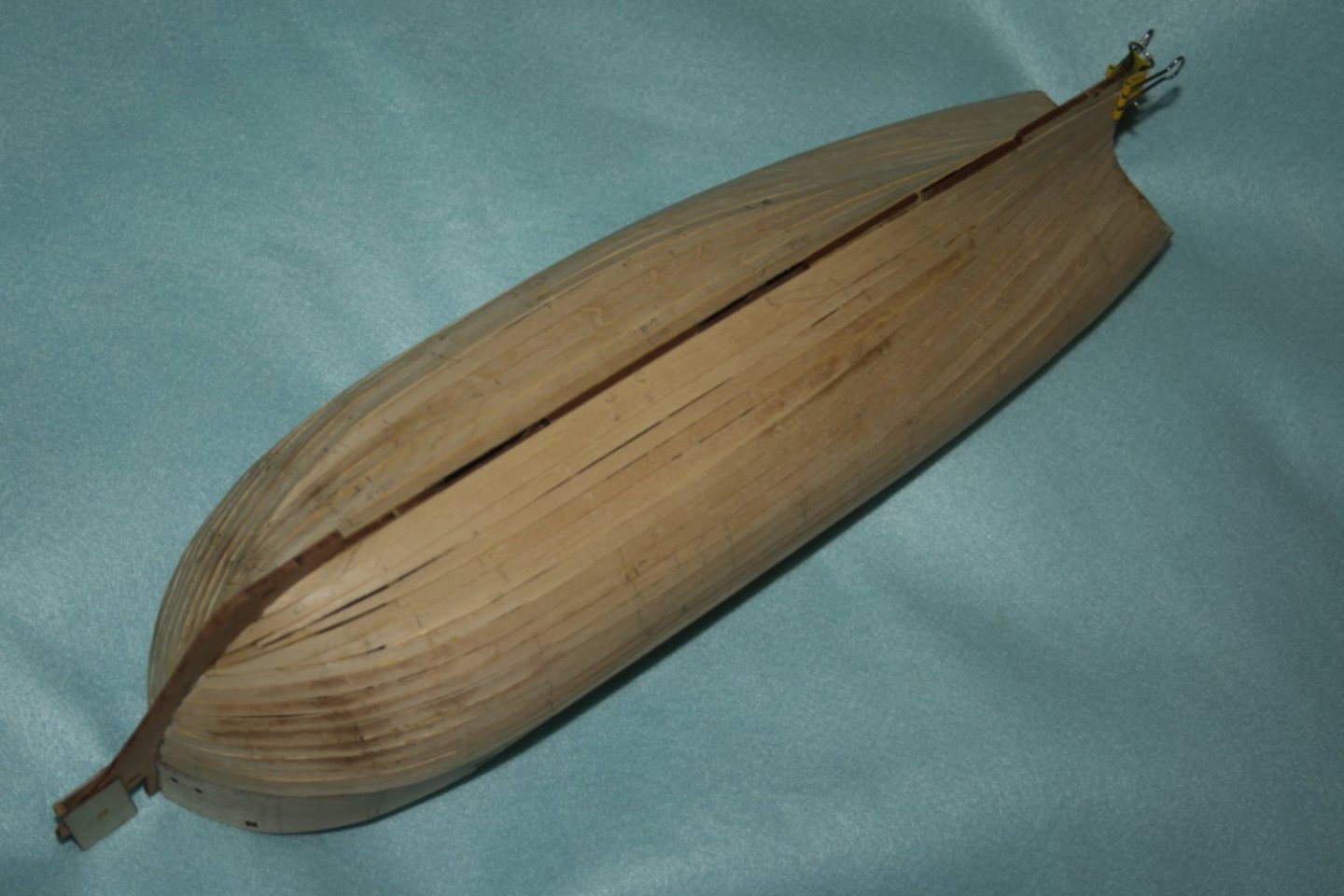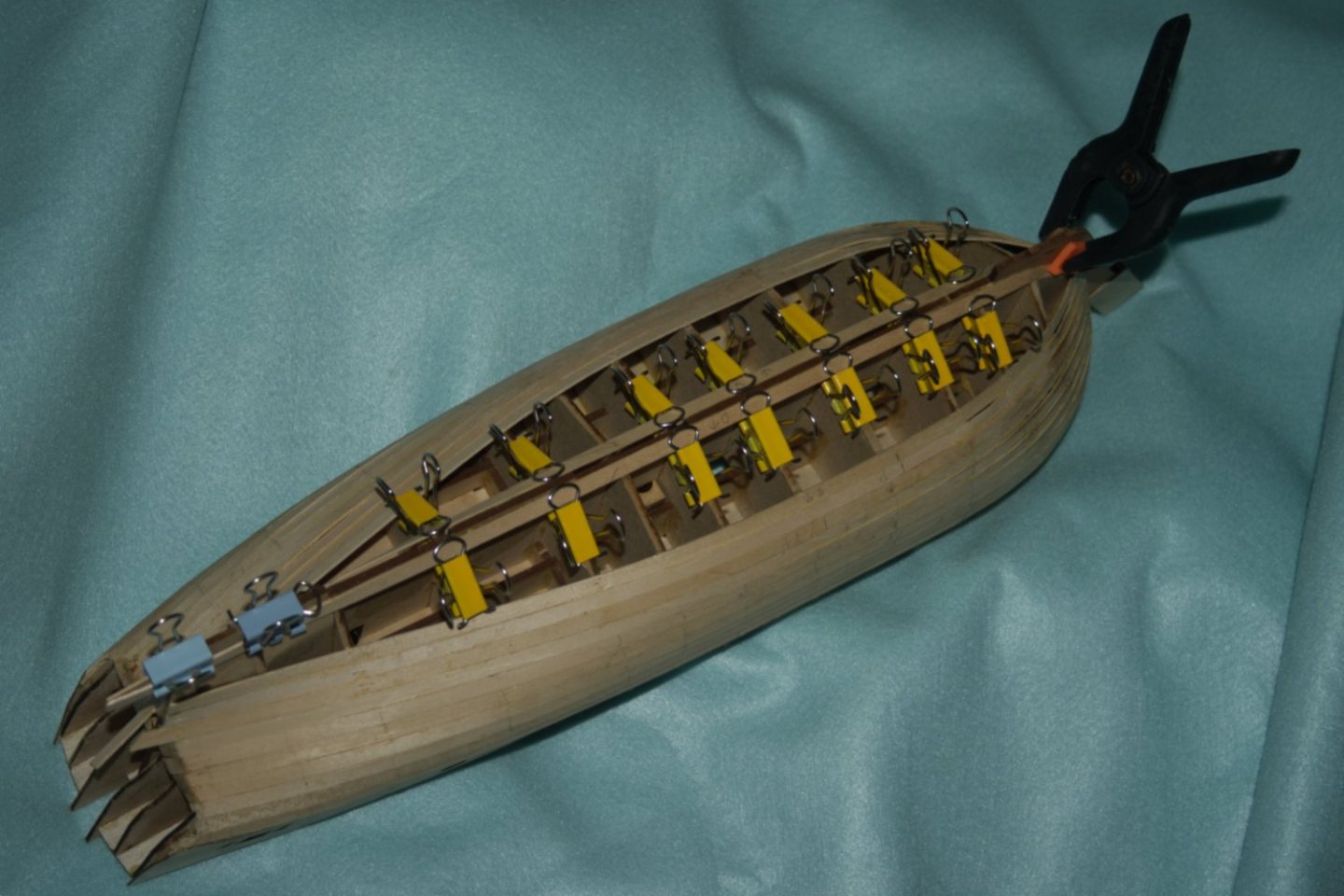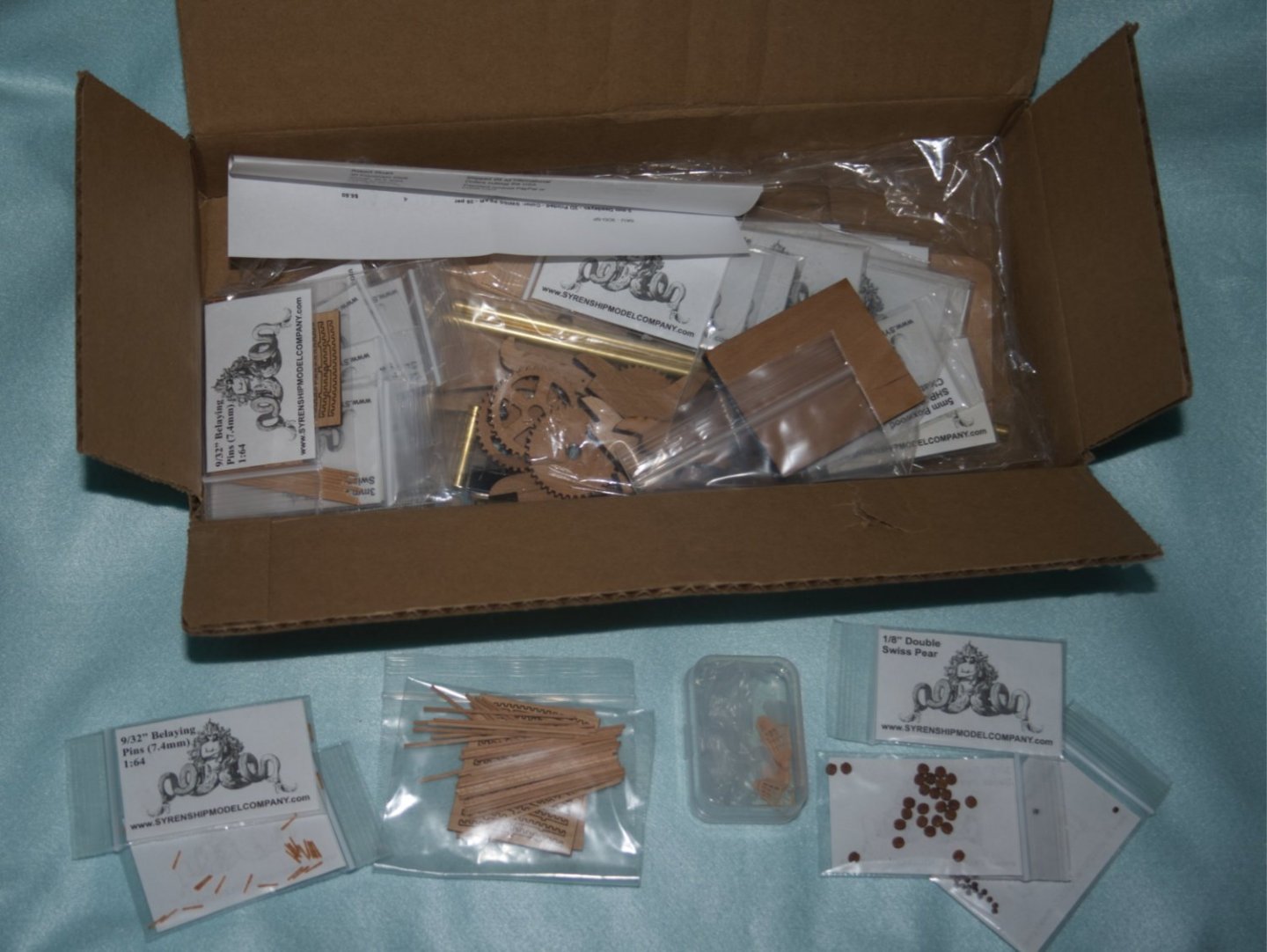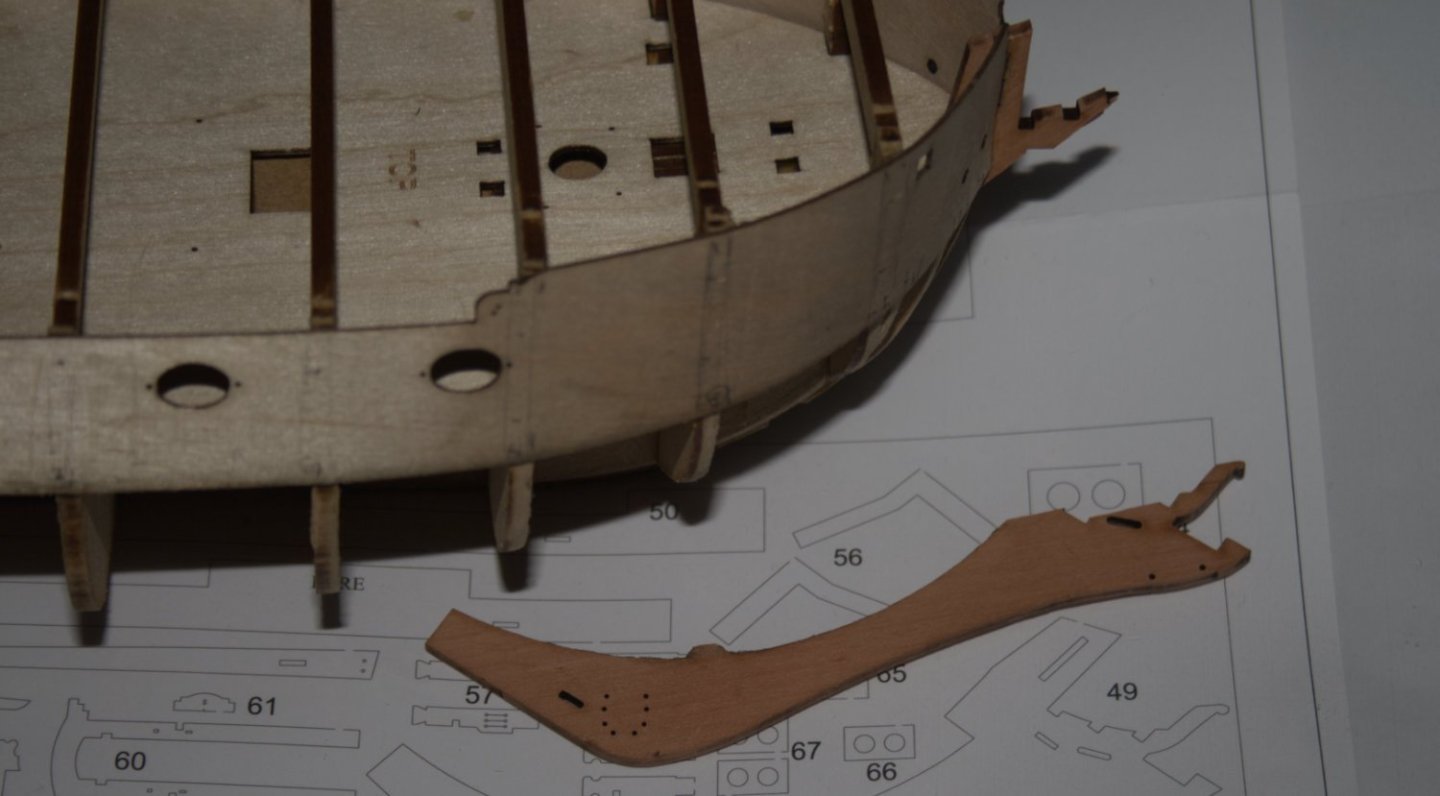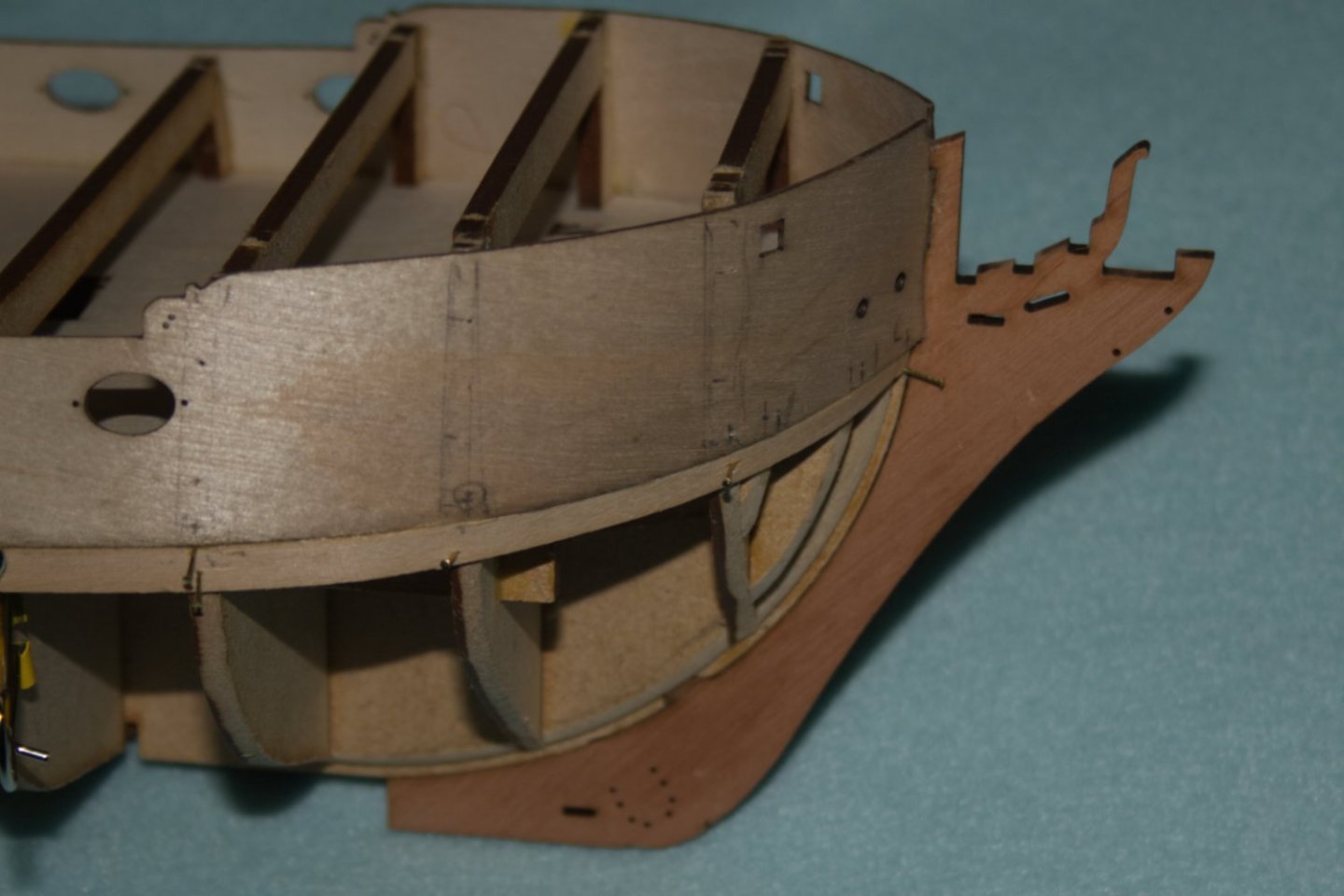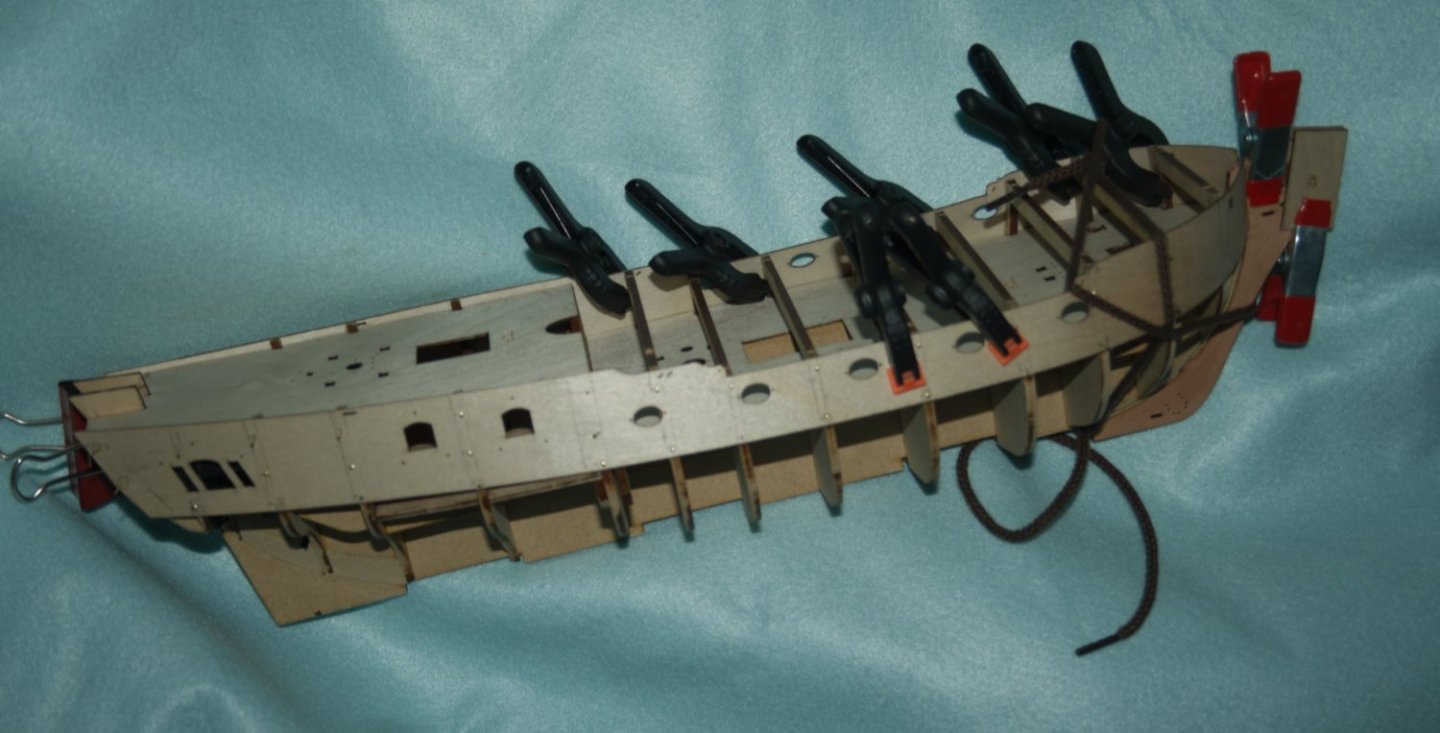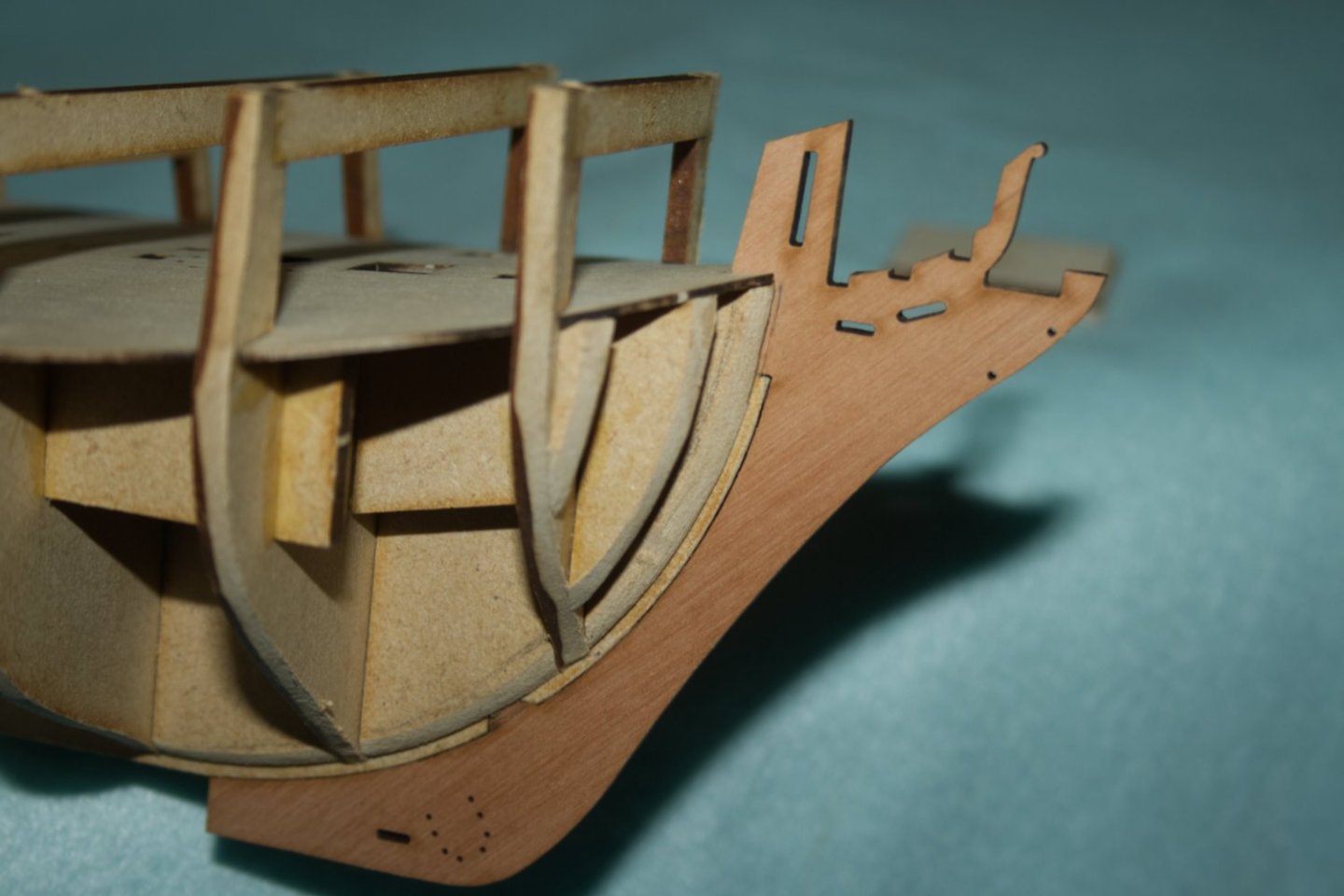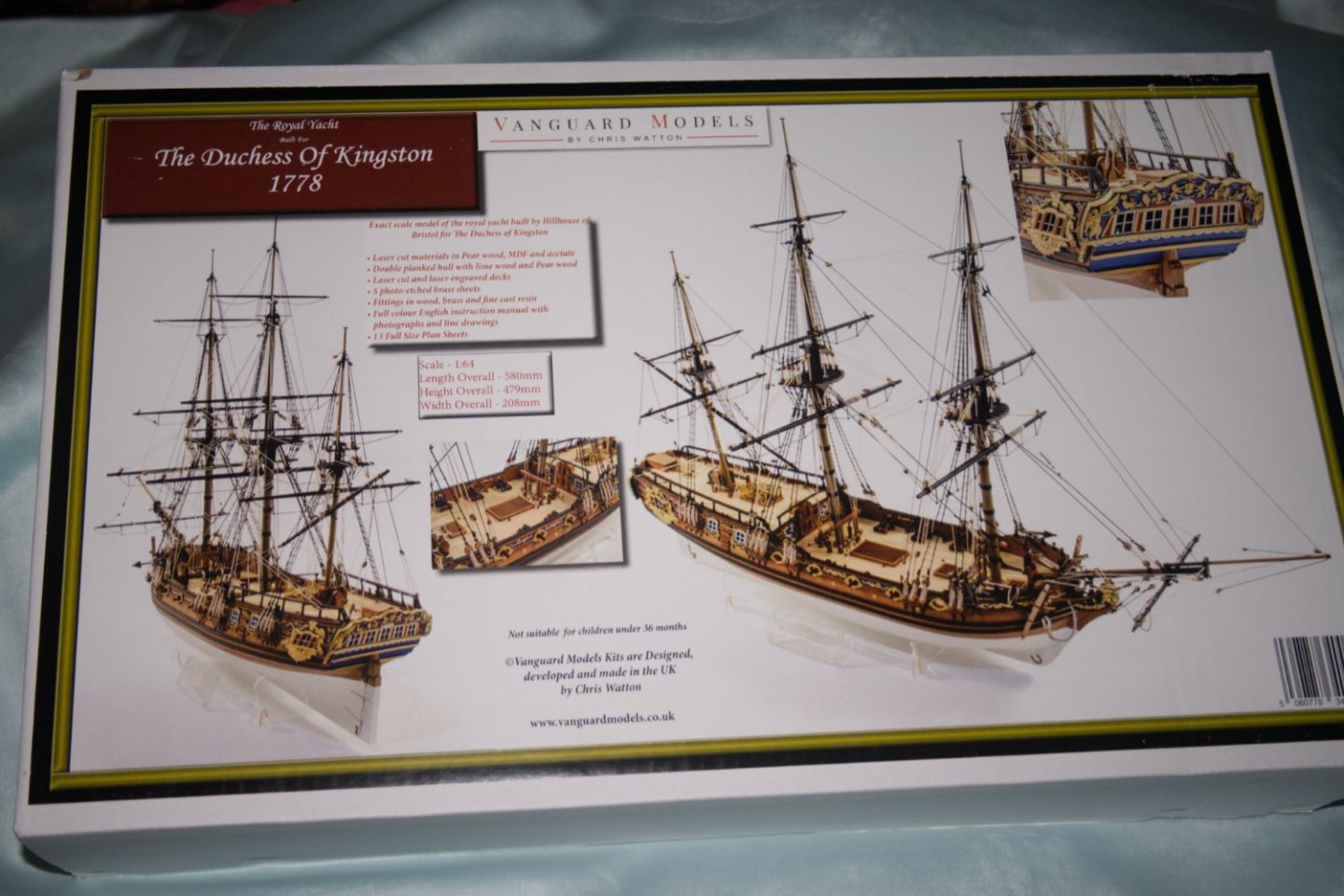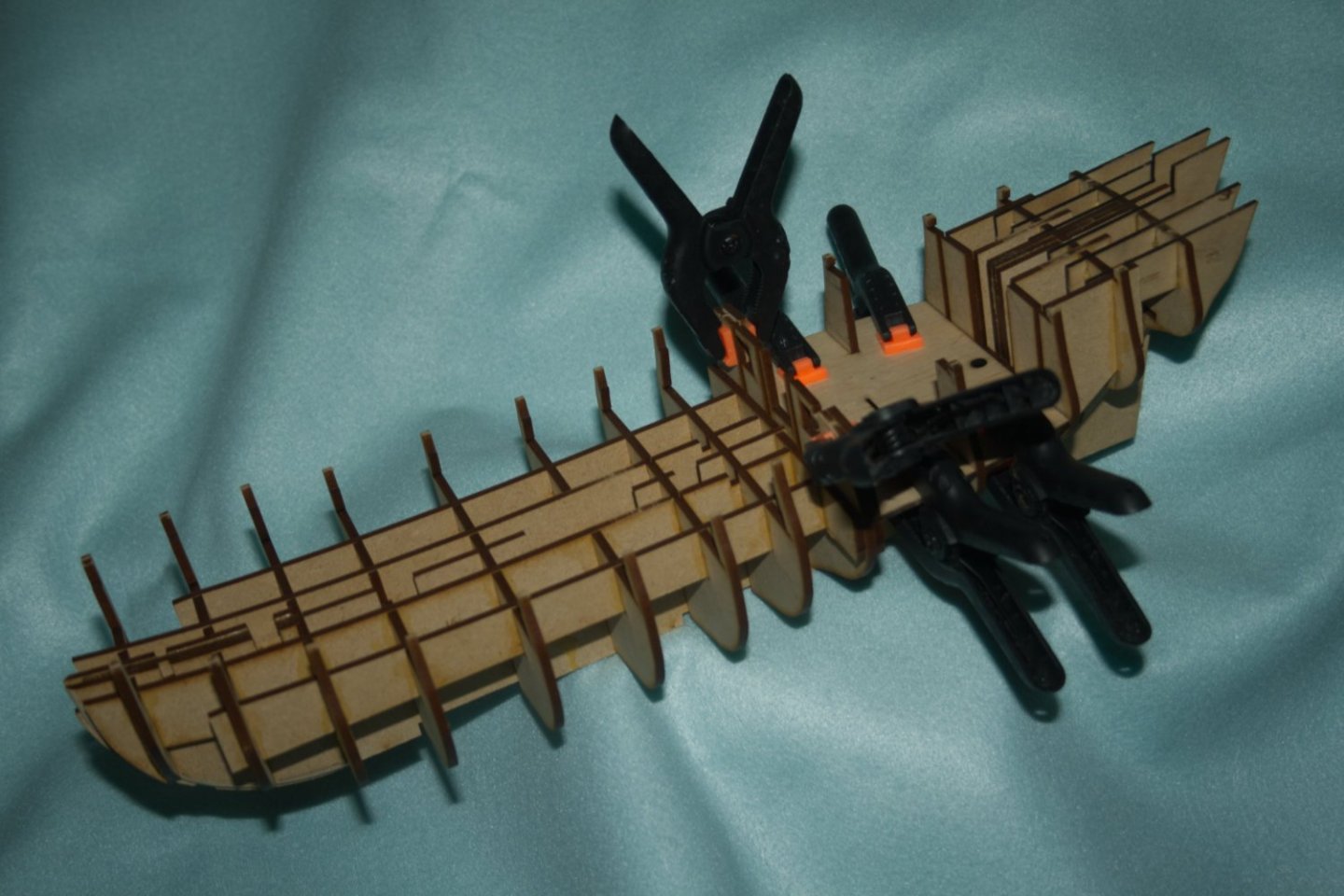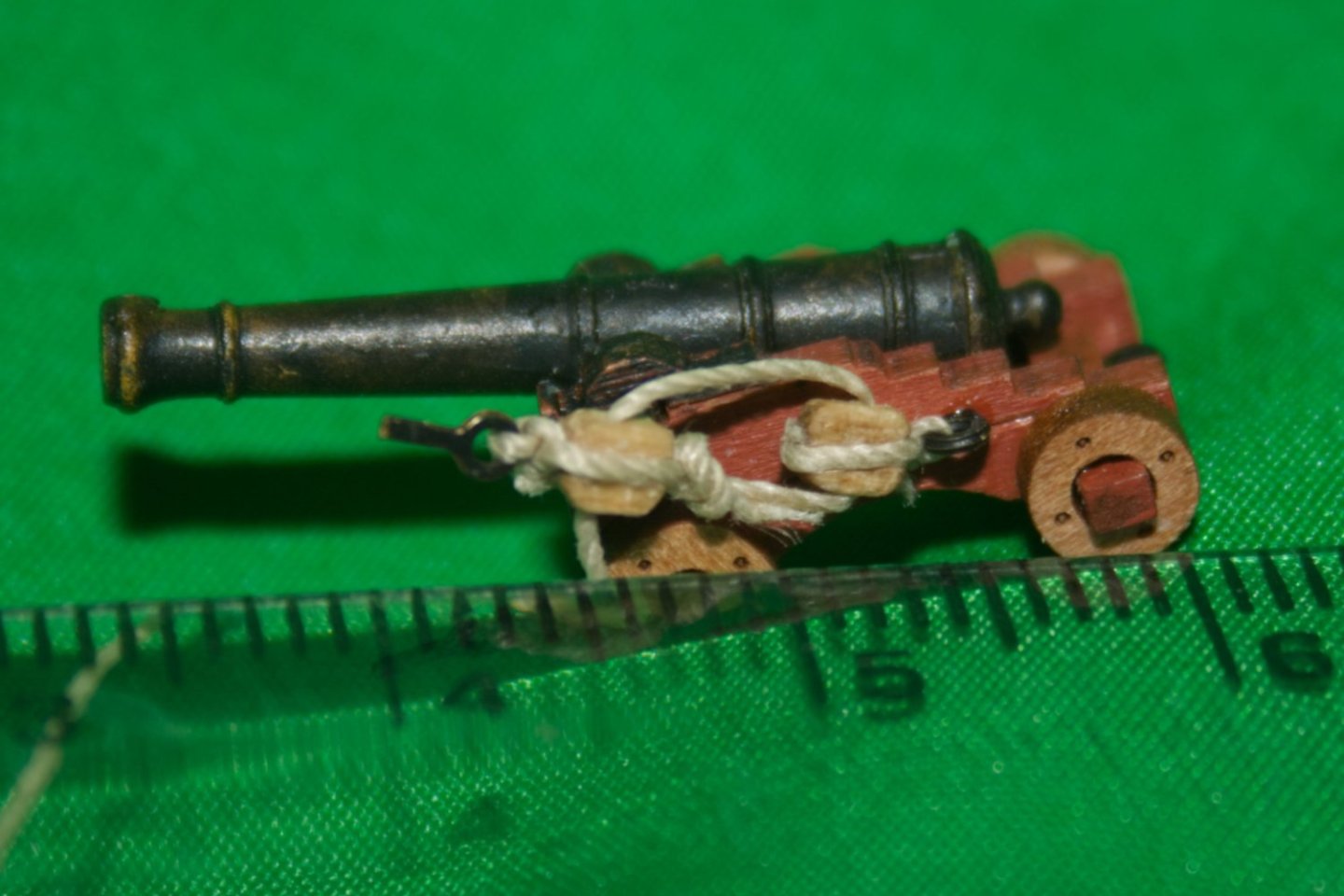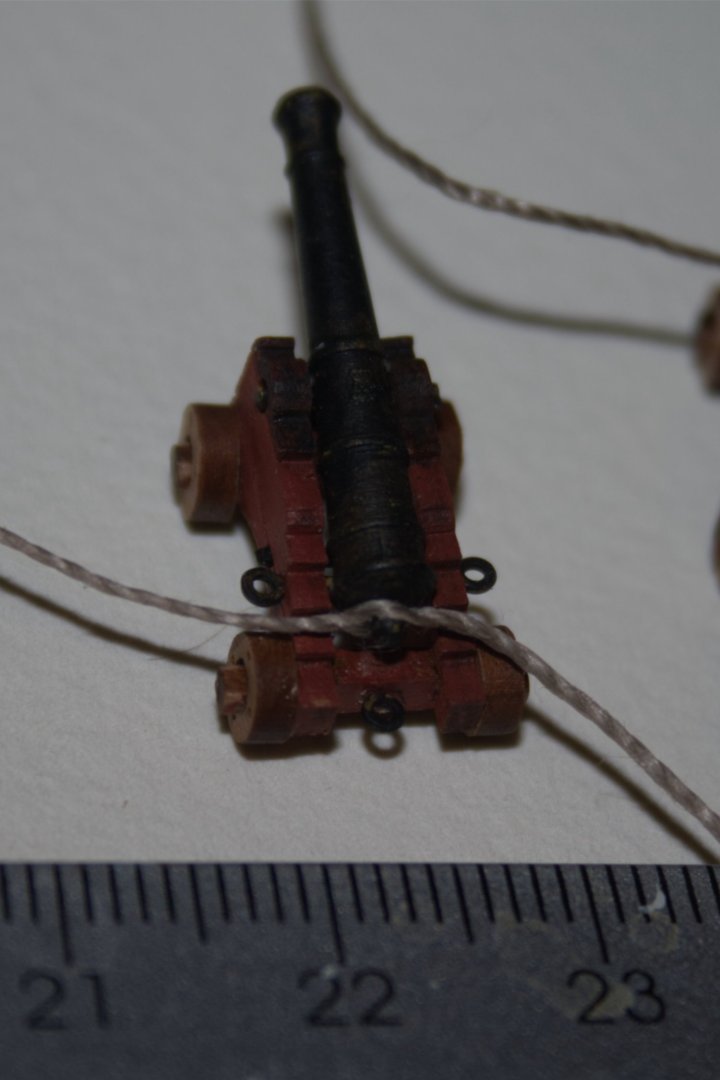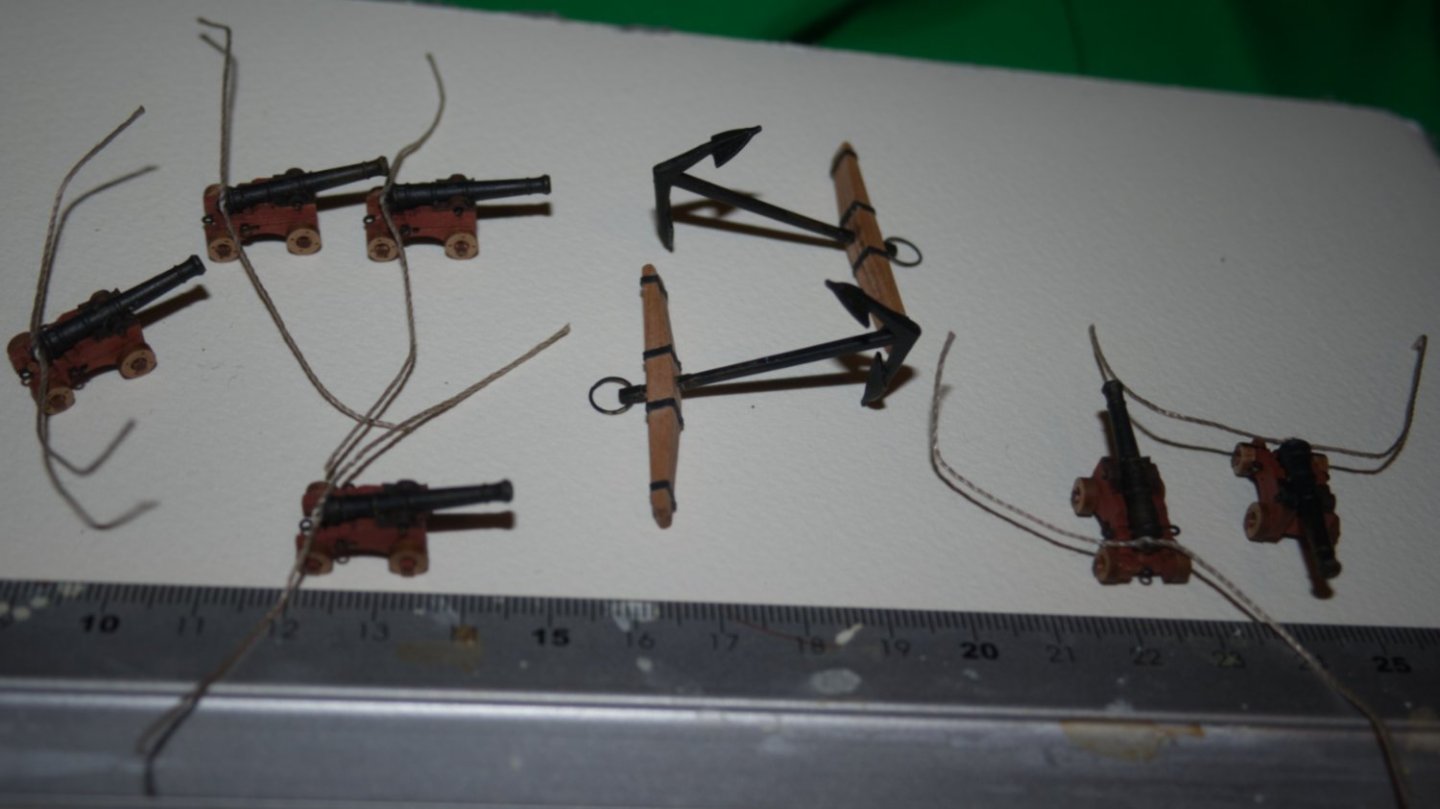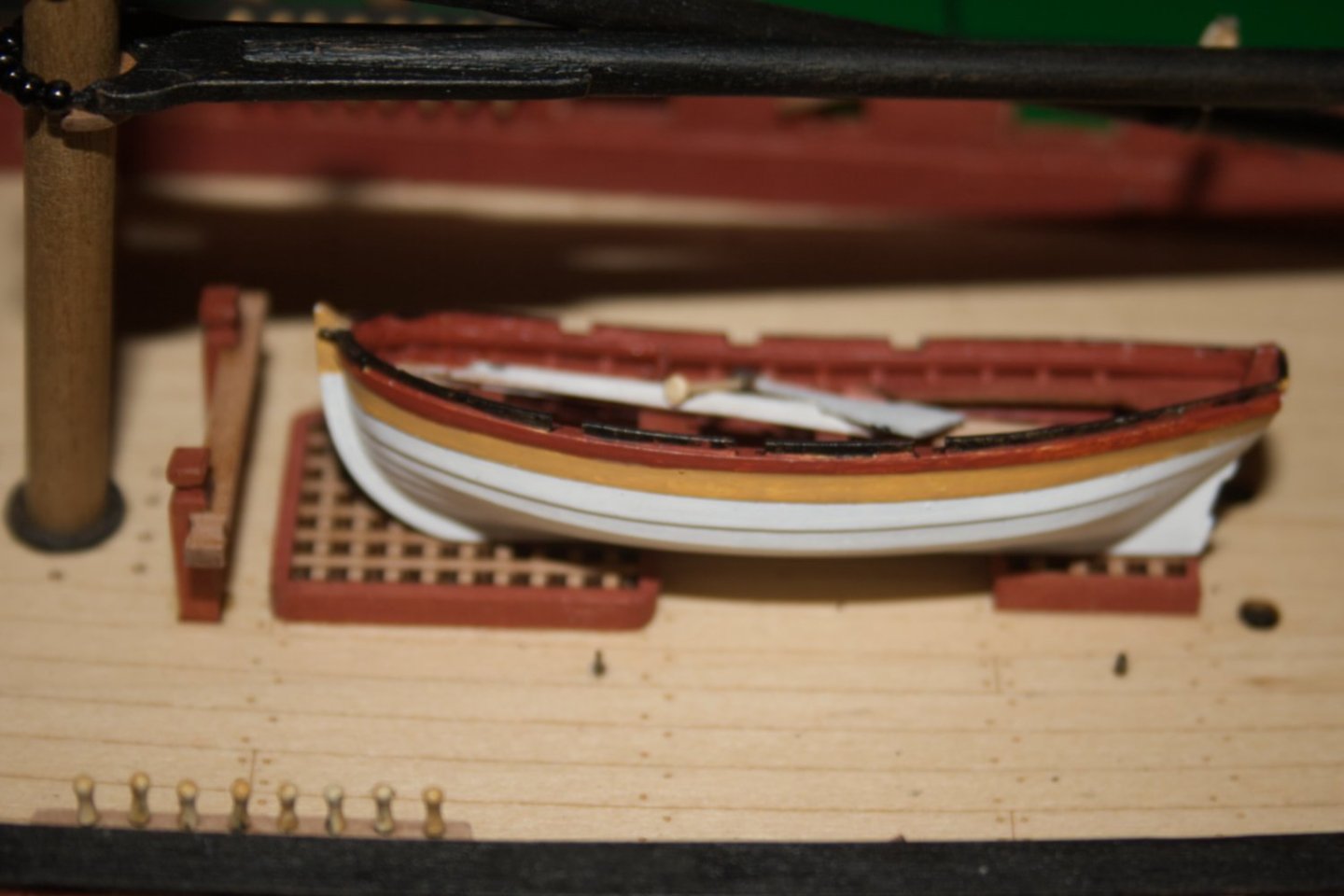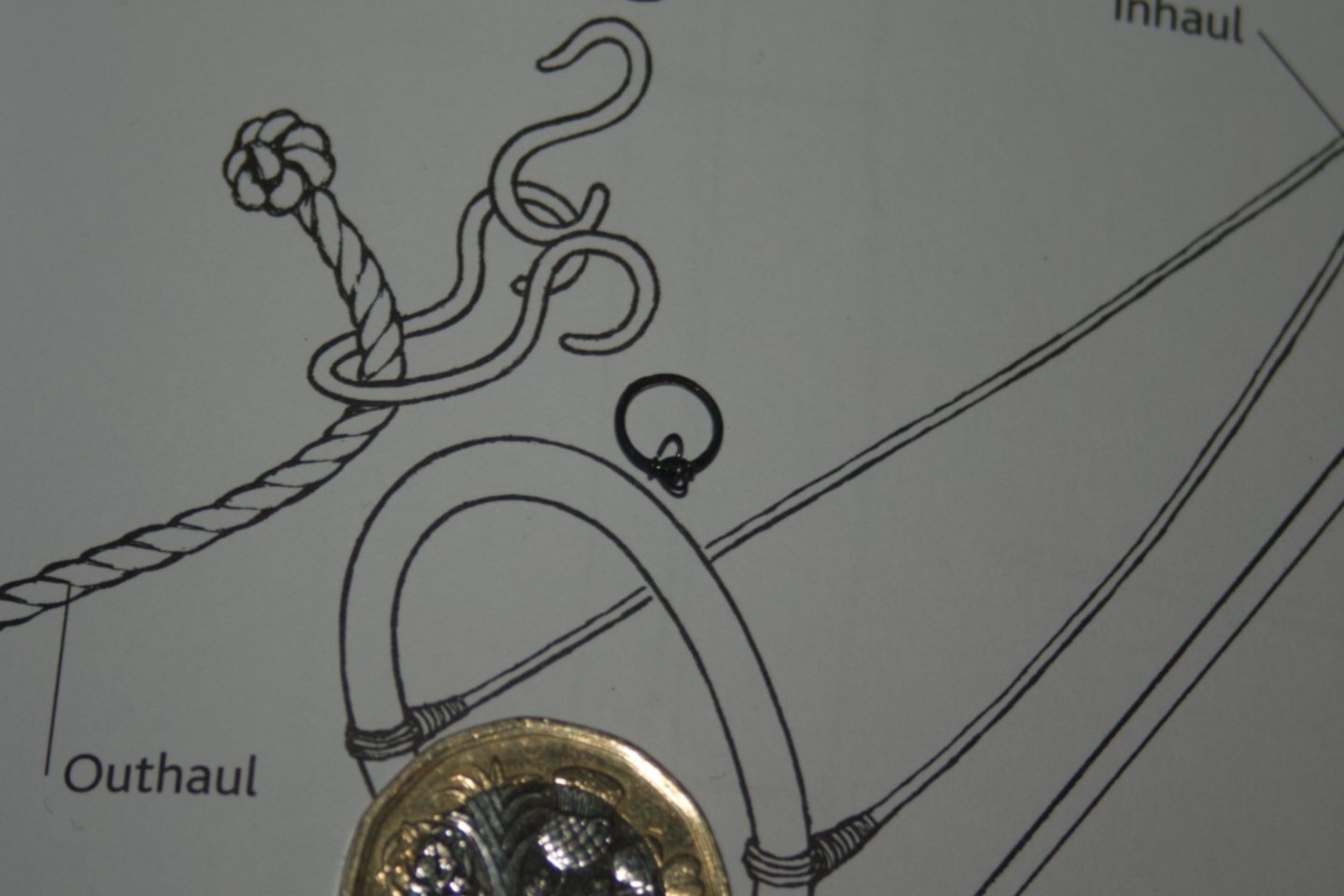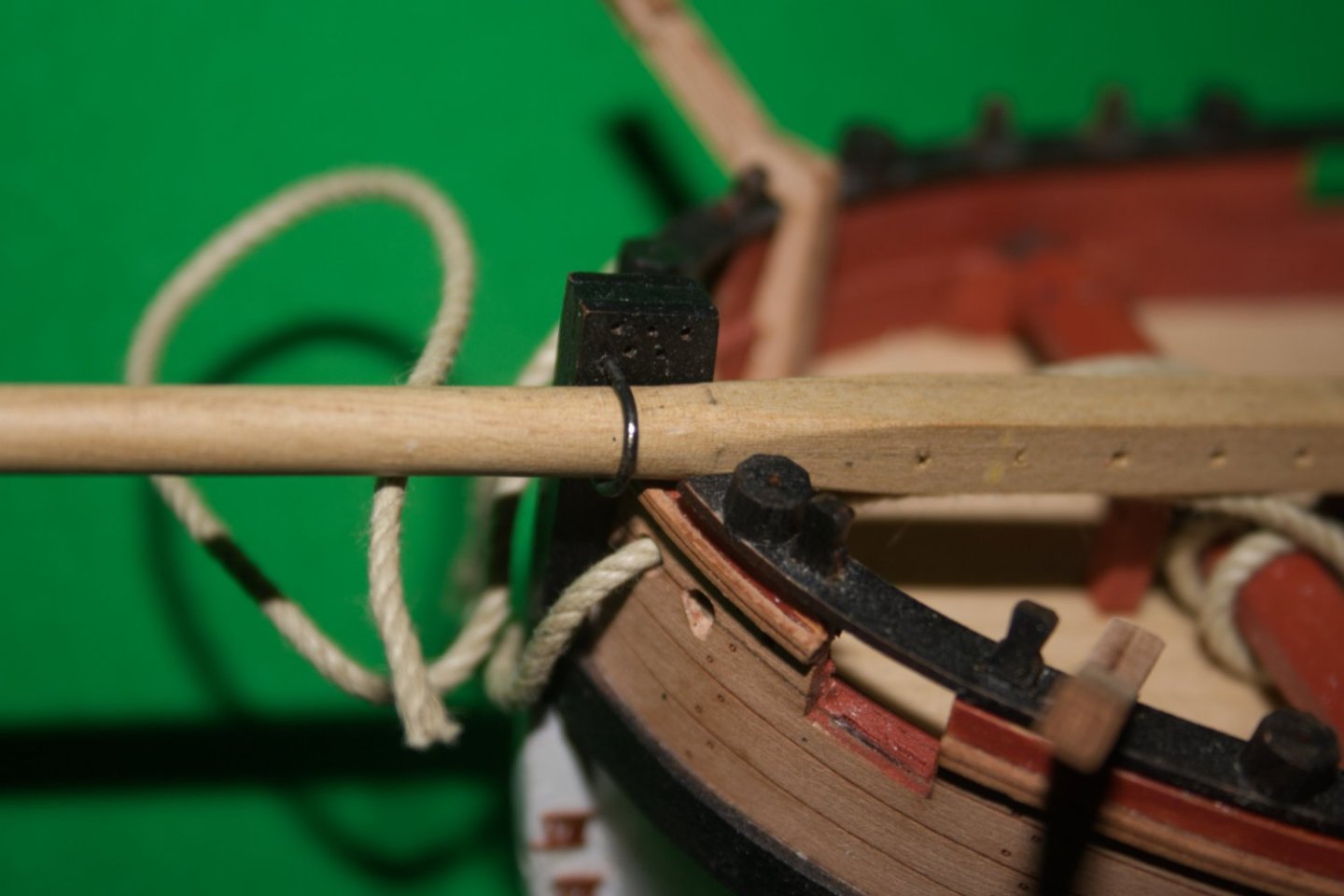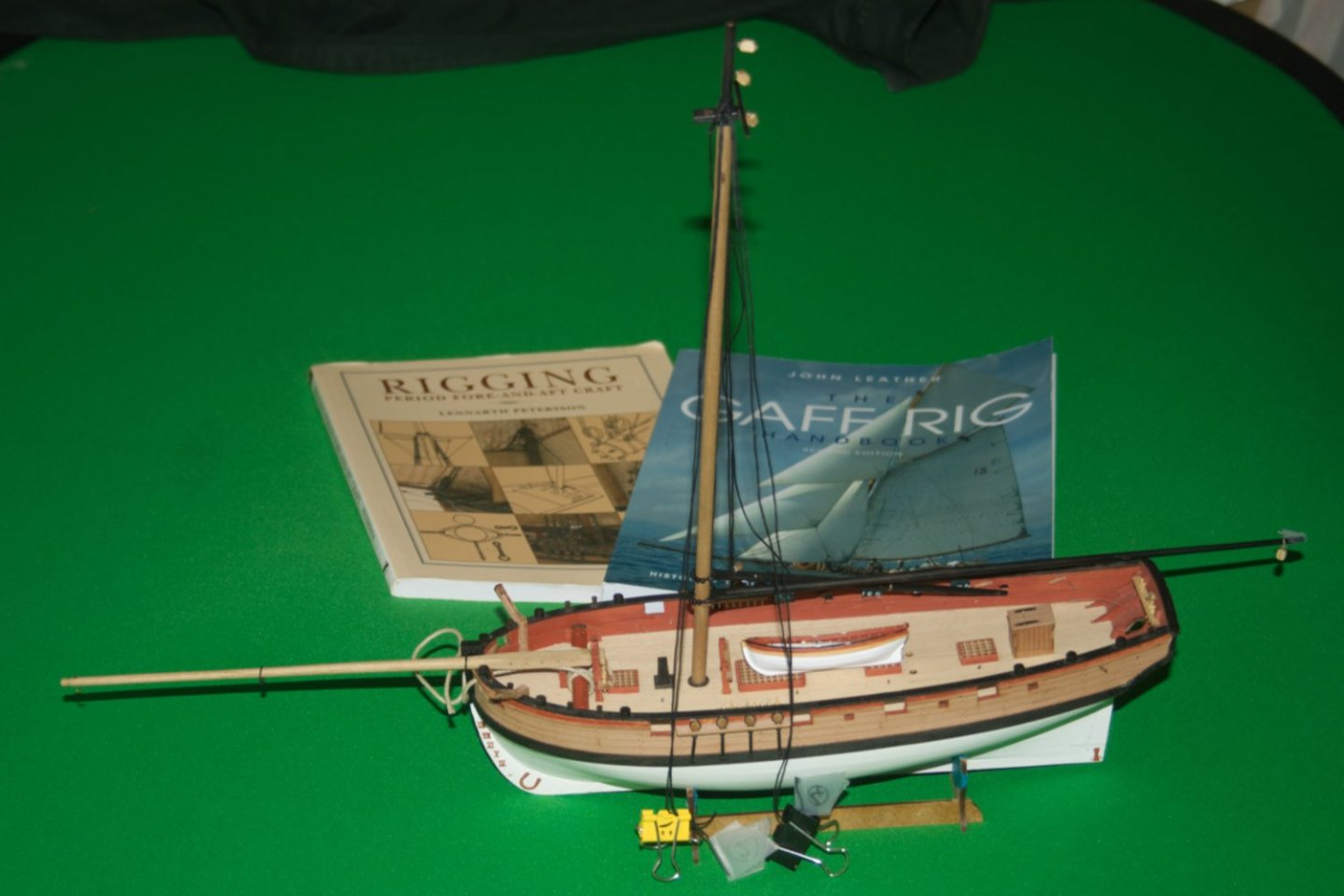
Pitan
NRG Member-
Posts
170 -
Joined
-
Last visited
Content Type
Profiles
Forums
Gallery
Events
Everything posted by Pitan
-
Looks complex Nick. I don't recall using edge bending on my Sherbourne, though I did bend the planks using an electric plank bender (mine isn't Amarti, but this is similar https://www.amatimodel.com/en/tools-and-equipment-parts-per-model/product-electric-plank-bender-b7205.html). Every few rows of planks, I heated the planks with the iron, to get them to conform to the hull. (Use a splash of water to prevent scorching.)
-
The instructions say to soak the Stern Counter Pattern – Lower (part 77) in boiling water for an hour and a half. Well, I didn't boil it for that long, but the lower counter pattern did get its soaking. It was then bound to a cylinder that happened to be the right size to fit under the yacht's stern, and left to set over night. Unwrapping the part this morning, it'd taken on the desired curve. This is (I believe) dry fitted, but looked similar glued. And now, with the Stern Counter Pattern – Upper (part 78) glued, filled and filed back. The next stage will be the side patterns, meaning yet more overnight soaking.
-
Progress with the inner planking; the garboard plank clamped. The inner planking is on, awaiting filling and smoothing. There is some scorching visible here: A hot plank bender is first used to curve the plank to the hull for fitting. After glue has set, I then come back with the plank bender, and press the boards down to the bulkhead form.
-
Last week, a few bits and pieces for rigging the Duchess arrived from Chuck at Syren Ship Modelling. These won't be used for a while yet (and some might divert to my Sherbourne). Today, I dropped the duchess on her stem, and succeeded in breaking off the bow pattern (part 49). Not an intended action, but it is, at least, recoverable. The figurehead support I'd made earlier shattered, but preserved the form of the pattern. The bow pattern, back in place, together with the first of the inner planks. I'll repair the support, and, while it worked before, hope that experiment isn't repeated.
-
I was at the Society of Model Shipwrights exhibition in Plymouth last week, stationed next to Chris Watton's stand. One model, in particular, caught my eye, the "Royal Yacht, Duchess of Kingston – 1778" kit. The ship was built in an old-fashioned style, early 18C, rather than late 18C, but, for me, this adds to the appeal. Once home from the show, I placed an order. It was in the next post and, arrived in my porch on Monday. A remarkably quick turn around. The kit is based on plans held at the National Maritime Museum, and it is known that the duchess owned (at least) one yacht. Soon after the Duke of Kingston's death, she sailed the vessel to Italy, and had it conveyed up the Tiber to Rome (according to the Newgate Calendar https://www.exclassics.com/newgate/ng308.htm). Now, I have a Vanguard Sherbourne, about ready for fitting out - delayed for want of small (< 2mm) blocks, and really shouldn't start another build before that is complete. Shouldn't? I have started another build, the Duchess of Kingston's yacht. Assembly started last night, with me testing the fit of the MDF core, which led to gluing the same. A bit more work today led to the fitting of a deck (not sure which deck this'd be, with that much space it could be a lounge) I did deviate from Vanguard's instructions, in that they call for bevelling of some bulkheads before adding to the model. While some doublers at the bow and stern were bevelled before gluing, the bulk heads were delayed until after the ply decks were complete. And, with all MDF and structural decks fitted.
-
I haven't been able to replace my blocks, though I have tried to soften corners on the ones I have. All of Sherbourne's canons are now rigged with 0.2mm out-hauls, and 0.4mm breech ropes. The out hauls will be trimmed to length after test fitting to the model, while the breech ropes are all 60mm. Longer breech ropes would give more space to work the guns, but I settled for 60.
-
I'm having problems with the size of the guns, and any blocks I try to add. Ruler scale is in mm. The smallest commercial blocks I can find are 2mm*, seen here with one of Sherbourne's 3 pounder (3 lb) guns. Does this look right? Questions What do other people do if they need a smaller block? (Is there commercial option?) Is there a better solution? * 2mm at 1/64 scales to ~5 inches full size.
-
Think I might steal your approach to the hooks on the blocks here. Thank-you to @Thukydides for pointing out your post.
- 38 replies
-
- Alert
- Vanguard Models
-
(and 1 more)
Tagged with:
-
A small update today. The gun carriages and anchors have been assembled. Sherbourne will carry the historic six guns as described in the supplied history, rather than her 'official' complement of the eight. I made wire rings for the anchors, rather than use the supplied flat photo-etched items. The guns all have breech ropes. Getting them to this stage was easier than I feared. Next step should be adding retaining eyes and the tackle for running the weapons out.
-
Sorry for such little progress in the past seven months, and no posts. Time, and over time, for an update. We have a ship's boat. This is Vanguard's 3d printed 14' yawl, which is (I think) the smallest vessel they offer. It will fit between the mast and the bilge pumps (round holes to right of the image). I'm not sure how the boat will be stowed, though this seems to be the most logical location. FWIW, I replaced the yawl's tiller with a brass pin, the (somewhat blurred) head of which can be seen in the photo. Other changes. Visible in the photo above are round belaying pins. These are turned brass items, painted. These replace the supplied photo etch pins. A traveller for the jib. This is attempt four or five, made from a mix of brass and bronze wires. The design is based on an illustration in Petersson's Rigging Period Fore-and-Aft Craft. The traveller in place on Sherbourne's jib, together with a bent pin acting as a keeper. Sherbourne is a beginner's kit, and doesn't include any means of holding the jib at the stem. I added a piece of U shaped wire to aid in this task (is this a gammon iron?). Sherbourne, as she is now. The jib and main mast are dry fitted.
About us
Modelshipworld - Advancing Ship Modeling through Research
SSL Secured
Your security is important for us so this Website is SSL-Secured
NRG Mailing Address
Nautical Research Guild
237 South Lincoln Street
Westmont IL, 60559-1917
Model Ship World ® and the MSW logo are Registered Trademarks, and belong to the Nautical Research Guild (United States Patent and Trademark Office: No. 6,929,264 & No. 6,929,274, registered Dec. 20, 2022)
Helpful Links
About the NRG
If you enjoy building ship models that are historically accurate as well as beautiful, then The Nautical Research Guild (NRG) is just right for you.
The Guild is a non-profit educational organization whose mission is to “Advance Ship Modeling Through Research”. We provide support to our members in their efforts to raise the quality of their model ships.
The Nautical Research Guild has published our world-renowned quarterly magazine, The Nautical Research Journal, since 1955. The pages of the Journal are full of articles by accomplished ship modelers who show you how they create those exquisite details on their models, and by maritime historians who show you the correct details to build. The Journal is available in both print and digital editions. Go to the NRG web site (www.thenrg.org) to download a complimentary digital copy of the Journal. The NRG also publishes plan sets, books and compilations of back issues of the Journal and the former Ships in Scale and Model Ship Builder magazines.



